SE 384th Street Culvert Replacement Project
Project completed in September 2025

The new culvert under SE 384th Street has been installed and the road is freshly paved. Crews will install guardrail in this section before the road is open to traffic.
Status update
September 24, 2025
Construction began on August 11, 2025, to replace the culvert under SE 384th St. Crews expect to open the road to traffic on Thursday, September 25th.
Our crew worked very hard to complete this project as quickly, safely, and efficiently as possible, and finished ahead of schedule. We’re thankful to the community for their partnership and patience during the road closure.
Crews will occasionally return to the construction site for punch list items and to plant/seed the area.
Please check this MyCommute and sign up to receive email/text notifications about the project at Road Alerts.
Project overview
During heavy rains, the culvert under SE 384th Street west of 176th Avenue SE was too small to handle the water. This led to flooding upstream on roads as far as 176th Avenue SE along with flooding on nearby private property. The previous four-foot-diameter concrete pipe was replaced with a much larger concrete box culvert. This work required an eight-week road closure.
Crews dug a large pit in the road to remove the old 48-inch-wide concrete pipe. Then, they prepared the ground to install a new culvert. They used a large crane to put the bottom and sides of the new culvert in the ground. The inside of the new culvert looks like a streambed with natural materials. After that, crews put the lid of the culvert in place using a crane and rebuilt and paved the road.
While there are currently additional downstream barriers to fish, once those are removed this culvert is designed to be fish passable and will allow salmon, trout, and other fish to swim farther up Charlie Jones Creek to their spawning grounds.
Frequently asked questions
A fish passage barrier is anything that makes it very difficult for fish to swim upstream or downstream.
Most fish barriers in unincorporated King County are round pipes (culverts) that channel streams and water underneath the road. Many of these culverts were installed between 30 and 100 years ago. These older culverts allow water to flow but are so narrow and steep that they prevent fish from swimming through them.
The previous concrete pipe is a fish passage barrier in Charlie Jones Creek, however, there are additional barriers downstream that will need to be removed before fish will be able to return to and from this location. Once the pipe is replaced under SE 384th Street it will no longer be a fish passage barrier and will allow passage if they return at a future date.
Once all fish passage barriers are removed the following species have the potential to return to Charlie Jones Creek:
- Winter steelhead
- Pink
- Coho
- Fall chum
- Fall chinook
- Odd year pink
- Coastal cutthroat trout
- Bull trout
Photos

With the new culvert installed under the road, crews are preparing SE 384th Street for paving.
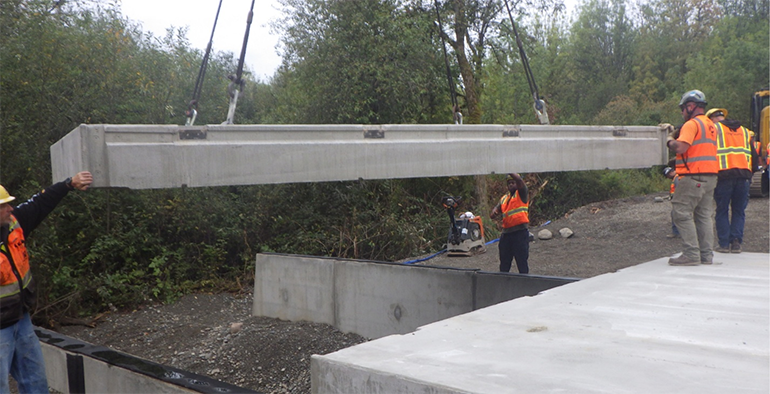
Using a crane, crew members guide the lid of the culvert into place. The inside of the culvert is filled with natural materials like gravel, rocks, and wood to mimic a streambed.
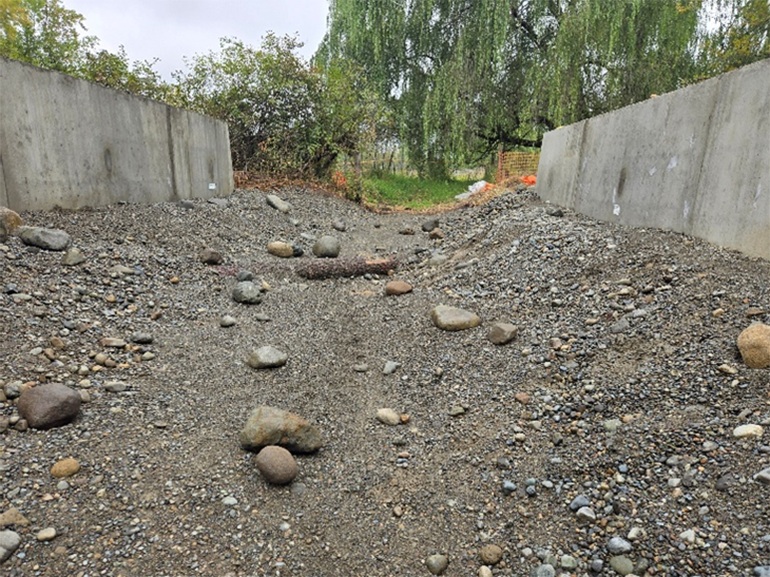
Natural materials such as gravel, rocks, and logs are added to the interior of the box culvert prior to the lid being placed.
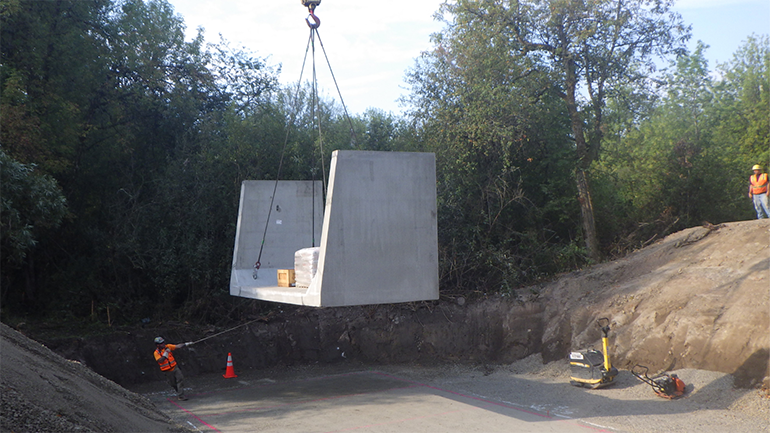
Using a crane, a member of the crew pulls the first section of the bottom of the new concrete box culvert into place. After the bottom and sides are in the ground, the crane will return approximately one weeks later to place the lid.
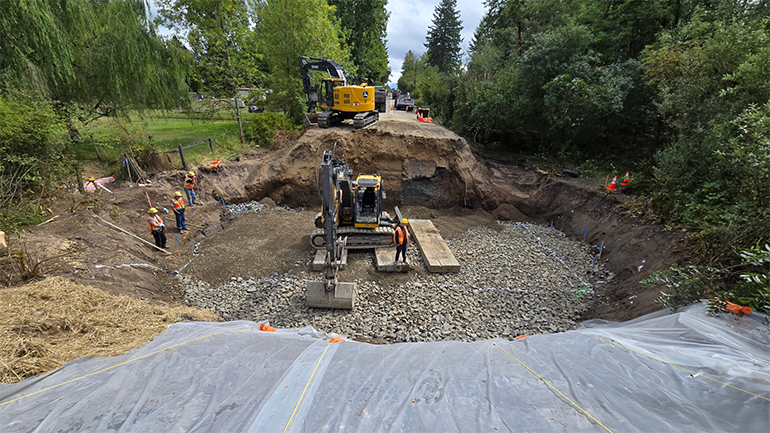
Crews have dug a deep pit in the road as they prepare for the upcoming placement of the large concrete box culvert by crane.
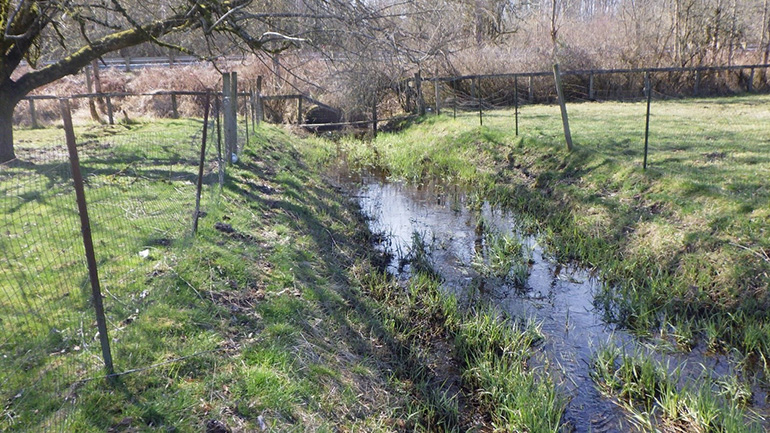
The culvert replacement project is located on SE 384th Street west of 176th Ave SE near Auburn, WA. Crews will remove a four-foot-wide concrete pipe that is too small to handle water during storms. A new much larger concrete box culvert will be installed in its place and will prevent flooding on private property and on nearby roads.
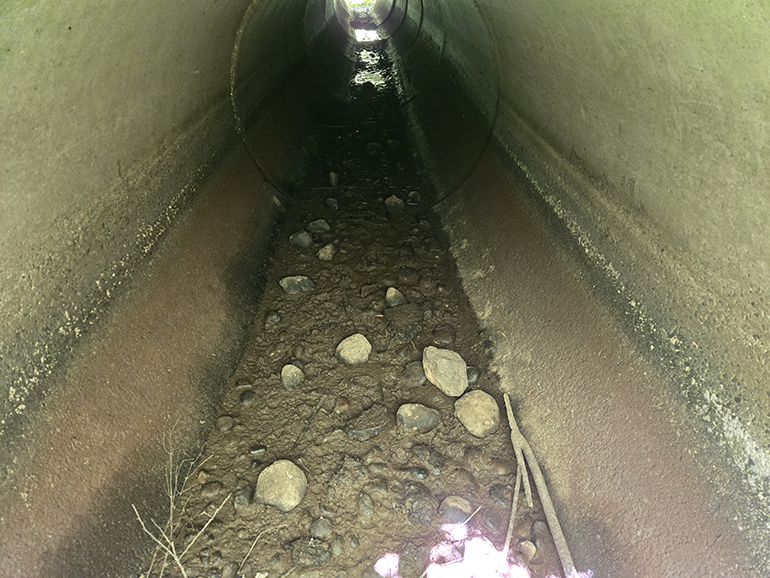
The old four-foot diameter pipe was removed and is being replaced with a much larger concrete box culvert. The new culvert will be large enough to handle water in the rainy season and during winter storms.
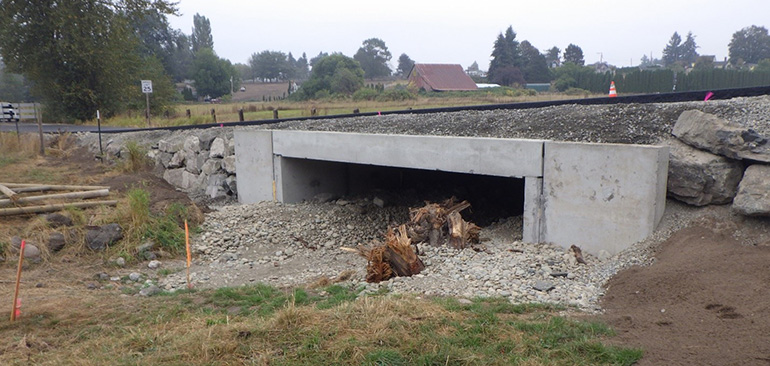
This concrete box culvert on SE 380th Place was built in 2022 and is a similar design to the new culvert on SE 384th Street. Both large structures are filled with gravel and large rocks along with natural materials to mimic a streambed.

 Translate
Translate
